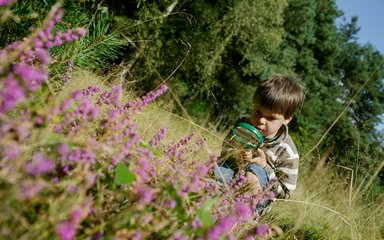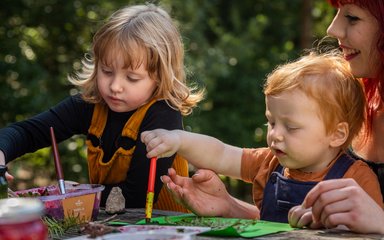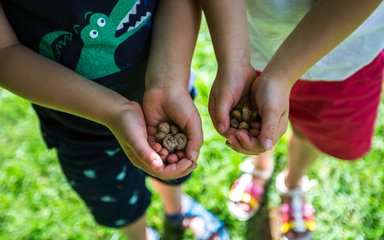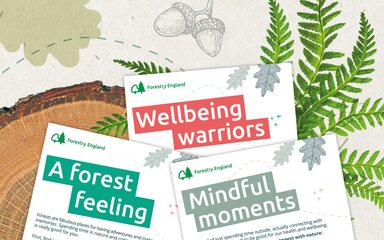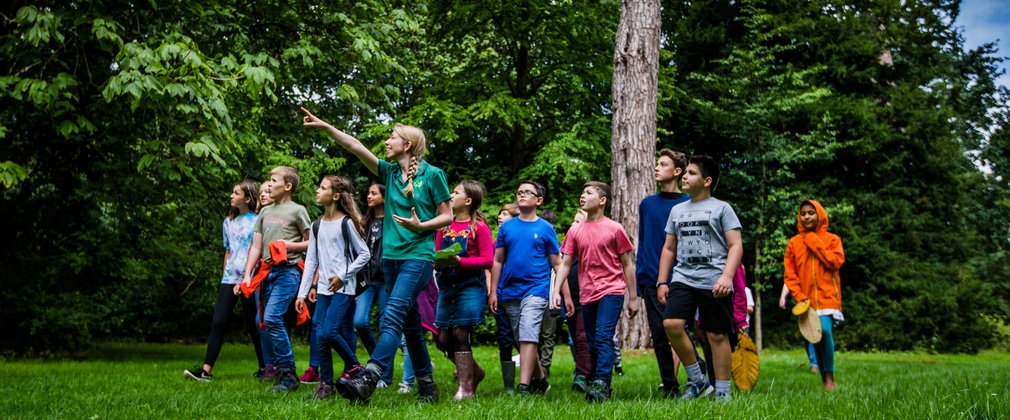
Mental health can impact on all aspects of our lives and is just as important as physical health.
Forest bathing is the perfect whole-class activity to help children de-stress and boost their emotional wellbeing in a natural way.
This blog is your step-by-step guide to introducing forest bathing to your class’s weekly routine, in any outdoor space.
The basics
Forest bathing is the Japanese process of relaxation, known in Japan as shinrin yoku. It’s the simple method of being calm and quiet among the trees, observing nature around you while breathing deeply.
Forests provide the perfect environment to reconnect with nature. But forest bathing is also suitable for outdoor spaces like gardens, parks and school playgrounds.
These exercises support the teaching of concentration and mindfulness. They also provide an excellent opportunity for children to learn from each other.


Getting started
Find a quiet spot that makes your class feel safe. You might like to try different outdoor areas over the course of a term to decide on the place your group prefers.
Ask your class to move slowly so they can see and feel more, while taking long breaths deep into the abdomen.
Slowing the exhalation of air to twice the length of the inhalation sends a message to the body that it can relax.
For more tips on encouraging mindfulness in children, download our KS2 and KS3 forest bathing activity sheet.
A full sensory experience
Next, ask your class to stop and sit, if possible. Encourage children to take in their surroundings using all five senses.
Ask them to focus on what they can see, hear, touch, smell and taste in the moment, rather than what else they are going to do that day. If their mind wanders off, gently bring focus back to their surroundings.
For this activity, it can help if everyone keeps their eyes open. Colours associated with nature, like greens and blues, are widely believed to be calming and healing.
Ask the group to think about: five things they can see, four things they can hear, three things they can touch, two things they can smell, one thing they can taste. Then ask them to think about one emotion or feeling they’re aware of.

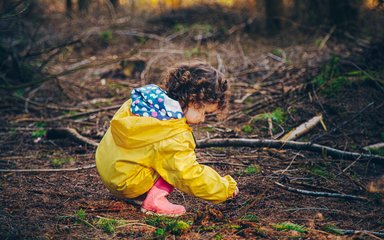
A mindful imagination
Now lead your class in sitting quietly using mindful observation and their imaginations.
Talk to your class about going on a magical forest adventure. Support them to let their mind wander through the forest of their imagination. Ask the children to keep their eyes closed and share: what colours can you see? What animals live in your imaginary forest? What sounds echo through the trees?
When everyone is ready, take three slow breaths and open your eyes.
Extend this activity by trying our forest yoga for kids video.
The wellbeing benefits of a forest visit
A forest visit is a great way to bring your class together and provide them with some tools to help them to think about their own mental health and wellbeing.
Wild Woodcraft, one of our learning providers in Lincolnshire, understand the importance of using outdoor space for wellbeing, strengthening bonds and mental health.
They've created a new programme called ‘Wild thrive and survive’ to help meet young people’s needs.
If your class enjoyed the activities in this blog, consider booking a visit to your local forest. Our learning providers can support you to learn more about practising mindfulness during curriculum-linked sessions.
We want to support the next generation to connect with nature in the nation’s forests.
We welcome trips to forests from educational groups, either self-led or supported by our learning partners.
Find your closest forest and pre-book your trip.

